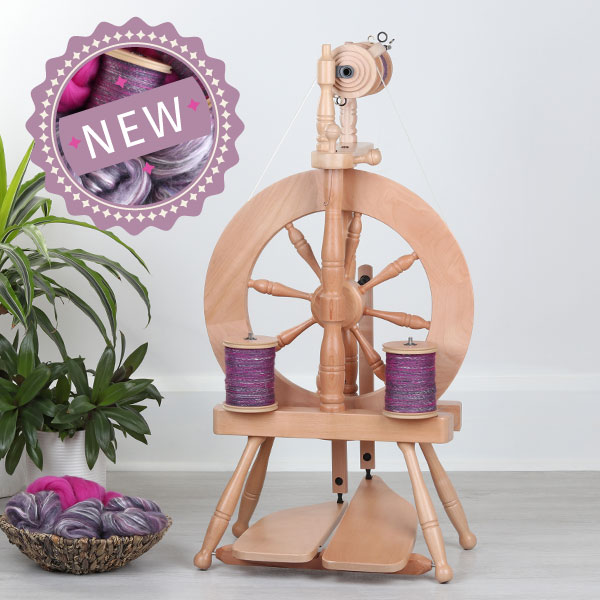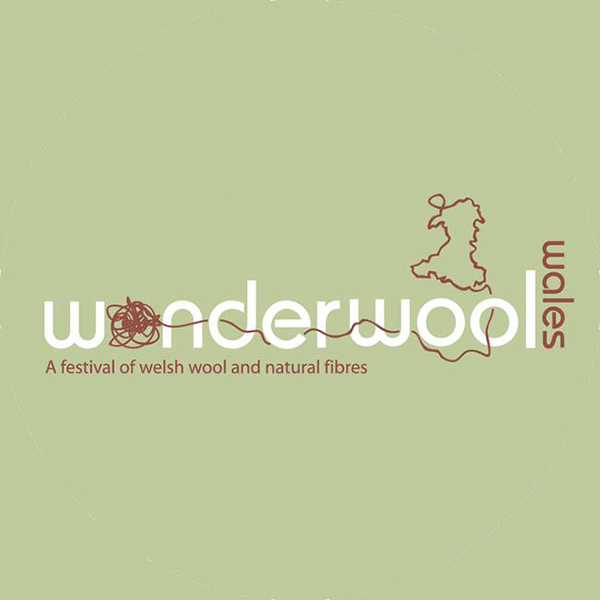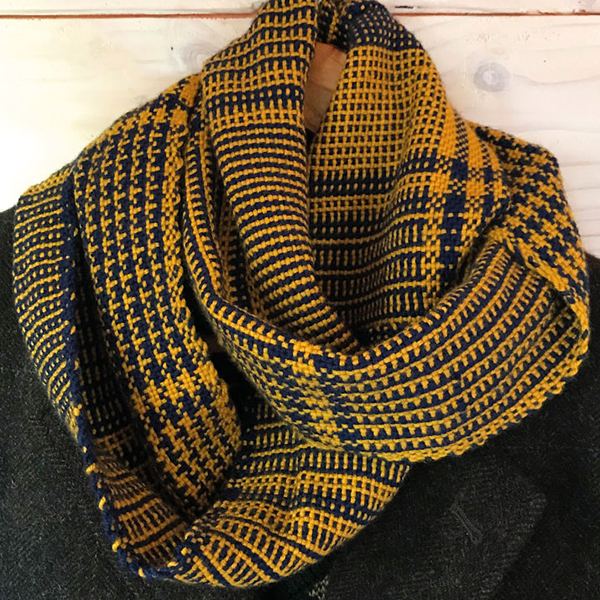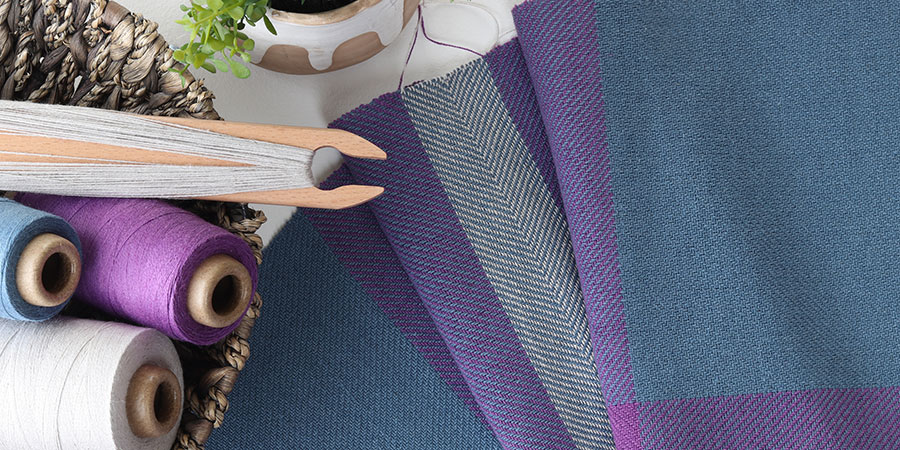
Cottolin yarn review
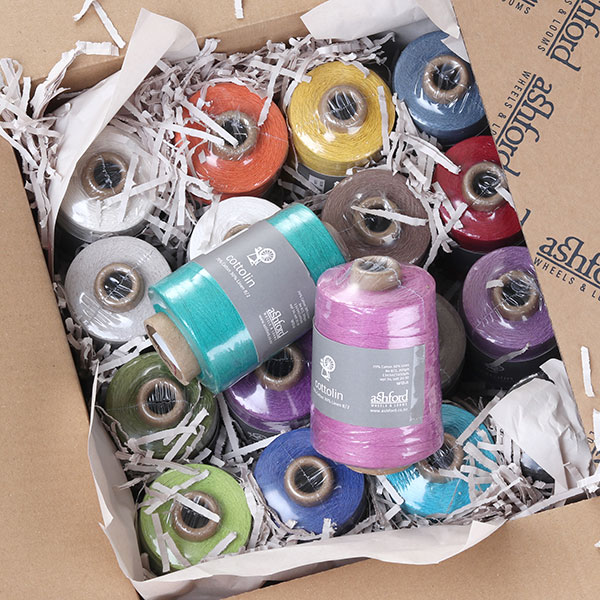
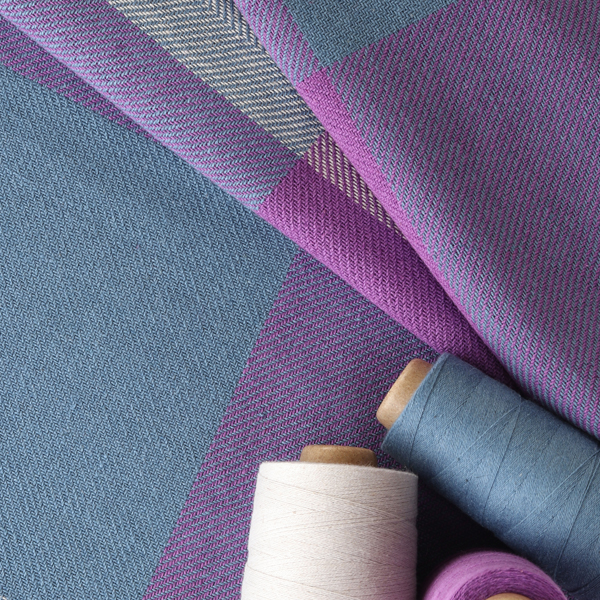
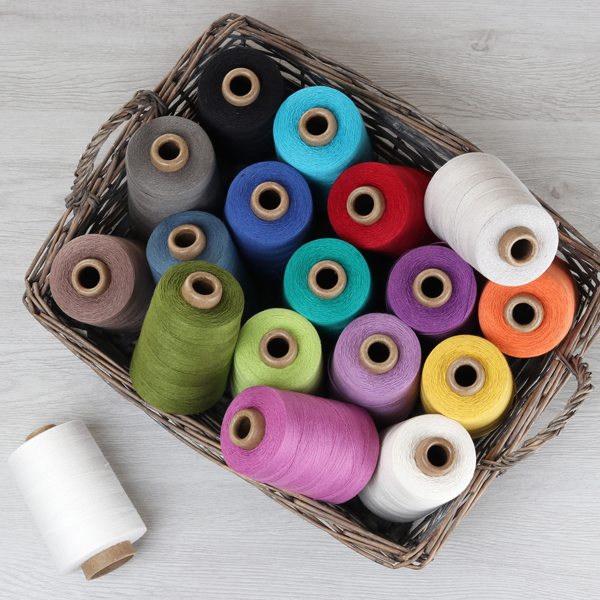
Can Ashford’s cottolin yarn change my mind? A yarn review by Robyn Spady, Heddlecraft
As seen in Heddlecraft magazine, issue #42 and shared with permission.
I like weaving cotton. I like weaving linen. But, my experience weaving with cottolin has been unsatisfactory. But if I’m completely candid, my experience weaving with cottolin goes way back and was limited to cottolin millends or yarns that other weavers gave me. The yarns broke, created tons of lint, and weren’t very colorfast. Perhaps working with yarns of unknown heritage is not the best way to develop an opinion about a yarn. But, this early experience prompted me to avoid weaving with cottolin. Regardless of my experience, I was intrigued when Ashford Handicraft Ltd announced a line of cottolin yarns. I have woven many times with their 10/2 mercerized cotton and have been very happy with it. I was more than curious about their 8/2 cottolin yarns. Ashford was generous and provided me with a modest selection of their cottolin yarns in a wide variety of colors to perform my ‘test drive’. I was skeptical, but willing to keep an open mind. Ashford’s 8/2 cottolin yarns.
Let’s start off with Ashford’s statistics on their cottolin yarn (presented in their order):
• Care instructions: Hot iron, Machine wash, Tumble dry
• Composition: 70% Cotton / 30% Linen
• Length per unit: 1,345m (1,470yds)
• Unit weight: 200 gm cone at net standard condition
• Weaving sett: 18 – 24 epi
• Weight type: 8/2
I decided to use Ashford’s cottolin yarns in a four shaft multi-colored twill towel (CLICK HERE FOR TOWELS PROJECT), thinking one of the best uses of cottolin would be as a towel. I chose to incorporate twelve of the colors to see how consistently they performed since manufacturing differences . . . and, especially, the dyeing process . . . can affect how a yarn behaves. The yarn is similar in grist to an 8/2 cotton. The towels were a twill weave, and I initially started with a sett of 20 epi. Immediately, I decided the sett needed a slight adjustment, and I increased the sett to 22 epi, which produced the results I was trying to achieve. It is important to point out on a different loom or a different project, the sett could need adjusting again. The cottolin towel project went well, and I was more than happy with the results. Specifically, I made the following observations:
Strength – One of the first things I do with a new yarn is see how strong it is and determine if it will hold up in the warp. My strength test is pretty crude. I take a hold of a length of the yarn between my two hands and see how hard (or easy) the yarn is to break. When I did this, I could break the yarn, but it took a bit of effort. This confirmed the yarn would definitely hold up well in the warp, and I’m pleased to report that I didn’t have a single broken warp end. I would like to mention the ability to break a yarn is handy. I regularly need to sever a yarn while warping and winding bobbins, and I find myself without a pair of scissors. What I look for in a yarn is one I can work with without having to worry about its fragility. Smoothness – For the majority of the yarns I weave with, especially for towels, I prefer a smooth yarn that will produce a clear pattern. The yarn should also have a firm feel to it and the twill pattern in the towels came through clearly.
Abrasion/lint – Over the years, I have woven many yarns that weave well, but produce a cloud of lint under my loom. I expected to find multi-colored lint under the eight-shaft Schacht Baby Wolf loom I used to weave the towel, but I didn’t observe any lint. That was a pleasant surprise for me. The abrasion and lint of a yarn can be exacerbated by the motion of the heddles going up and down, advancing the warp, and the reed moving back and forth to beat the weft in while weaving. The loom had flat metal heddles and a relatively new stainless steel Gowdy Reed reed.
Consistency in grist and twist – Other than the color, the yarns were consistent across the color range I worked with and down the length of the yarns. This may seem like an odd observation since some may expect the yarns to all be exactly the same because they are all 8/2 cottolin, but manufacturing processes can create slightly different yarns. This can make it challenging to choose an appropriate sett. Inconsistent yarns may not behave the same when the spinning process produces variations in twist. I suspect these yarns were manufactured around the same time, and that was helpful to maintain
consistency.
Knots – Knots drive me nuts! Every once in a while, I get a yarn that has numerous knots along its length. I prefer to avoid knots whenever possible in the warp, and when I encounter a yarn with a knot, I will stop and start the strand over. There has to be Murphy’s Law of some kind that states the presence of a knot in the warp will interlace at a critical point in the pattern. In all fairness, I believe some production runs of yarn may have more knots when they’re being produced near the end of production. I expected some knots, but I found only one.
Finishing – The towels were wet finished in a washing machine on warm, dried on warm in a dryer, pressed with a hot iron, and pressed even harder with a flatbed steam press. It may not be able to ‘polish’ cottolin like a 100% linen; however, the towels finished very nicely, felt like they had good structural integrity, and had an excellent drape.
Color fastness – This is where I expected to observe some bleeding. Over many years, I eye some colors with suspicion . . . especially red, green, and black. There’s nothing like spending a significant amount of time and money warping and weaving a project to end up with colors bleeding. I usually start my wet finishing process in a washing machine and add a tablespoon or two of Synthrapol and a couple of SHOUT® Color Catcher sheets (sometimes referred to as ‘dye magnets’) to capture
excess and loose dye molecules. For this particular project, I wanted to observe any proximity transfer (fancy term for ‘bleeding’) and wove an inch of white 8/2 cotton weft at the beginning and end of each towel. Between the color catchers and the white thread, I should be able to determine how color fast Ashford’s cottolin yarns are. Below is evidence of my results. In the first image, there was no change in the white weft threads. In the second image, the color catcher sheets did not show any residual dyes. This leads me to feel confident these yarns have good color fastness.


I’m more than happy with my experience warping and weaving Ashford’s cottolin yarns. In the spirit of Humphrey Bogart in the movie Casablanca . . .
I’m confident this is the beginning of a beautiful friendship with this yarn. ~ Robyn


